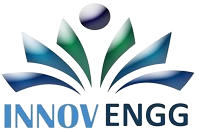Implementing ISO standards can transform your organization boosting quality, enhancing safety, and streamlining processes. Yet, despite their proven benefits, many businesses stumble along the way, wasting time, resources, and opportunities.
ISO standards are more than just certifications they are frameworks designed to elevate organizational performance, ensure regulatory compliance, and foster a culture of continuous improvement. From improving product quality to enhancing workplace safety and operational efficiency, the advantages are undeniable.
However, implementing these standards is not always straightforward. Organizations often face challenges such as inadequate planning, lack of management commitment, or insufficient employee training. These obstacles can lead to delays, non-compliance, and even failed audits.
This article aims to guide businesses through these common hurdles, offering practical insights to avoid pitfalls and ensure a smooth, successful ISO implementation journey. By understanding and addressing these challenges early, your organization can achieve compliance faster while reaping the full benefits of ISO standards.
Understanding ISO Standards
ISO standards are internationally recognized frameworks designed to help organizations consistently deliver quality, manage environmental impact, and ensure workplace safety. Some of the most widely implemented standards include:
- ISO 9001: Focuses on quality management, ensuring that products and services meet customer expectations and regulatory requirements.
- ISO 14001: Targets environmental management, helping organizations reduce their ecological footprint and comply with environmental regulations.
- ISO 45001: Concentrates on occupational health and safety, minimizing workplace risks and promoting a safe working environment.
Proper implementation of ISO standards can bring measurable benefits, including improved operational efficiency, enhanced customer satisfaction, stronger brand reputation, and reduced risk of non-compliance. Beyond compliance, aligning ISO standards with your organizational goals ensures that processes support overall business objectives, rather than becoming bureaucratic exercises. When done right, ISO becomes a strategic tool for continuous improvement and long-term success.
Common Pitfalls in ISO Implementation
Even with their clear benefits, ISO standards can be challenging to implement. Many organizations fall into common traps that hinder compliance:
- Lack of Top Management Support:
Without strong leadership commitment, ISO initiatives often lack direction, resources, and accountability, making compliance difficult to sustain. - Poor Planning and Scoping:
Inadequate planning can lead to unclear objectives, undefined responsibilities, and overlooked processes, resulting in implementation delays and inefficiencies. - Inadequate Training and Awareness:
Employees who do not understand their roles or the importance of ISO compliance can unintentionally create gaps in processes, risking non-conformance. - Incomplete Documentation:
Missing, outdated, or inconsistent records compromise traceability, audit readiness, and overall system effectiveness. - Overlooking Continuous Improvement:
Treating ISO as a one-time certification rather than a living system can prevent organizations from achieving the long-term benefits of efficiency, risk reduction, and quality enhancement. - Neglecting Internal Audits and Monitoring:
Skipping regular audits or failing to act on findings leaves gaps unresolved, undermining compliance and leaving organizations vulnerable to issues during external audits.
How to Avoid These Pitfalls
Avoiding common ISO pitfalls requires a structured approach:
- Gain strong leadership commitment: Assign an ISO champion or dedicated team to oversee implementation and maintain accountability.
- Conduct thorough gap analysis: Map current processes against ISO requirements and develop a step-by-step implementation plan.
- Train employees: Provide comprehensive training to ensure all staff understand their roles and responsibilities in compliance.
- Maintain documentation: Keep procedures, records, and policies updated, accurate, and accessible for audits and daily operations.
- Establish continuous improvement: Use the Plan-Do-Check-Act (PDCA) cycle to regularly review processes and implement improvements.
- Schedule internal audits: Regular audits help identify weaknesses, drive corrective actions, and ensure ongoing compliance.
Tools and Resources
Several tools can simplify ISO implementation:
- Software solutions: Platforms for document management, process mapping, and audit tracking.
- Checklists and templates: Standardized forms for gap analysis, audits, and compliance reporting.
- Reference materials: ISO guidelines, training modules, and industry-specific best practices.
Leveraging these resources can reduce errors, save time, and make compliance more manageable.
Conclusion
Successfully implementing ISO standards requires foresight, structured planning, and ongoing effort. Avoiding common pitfalls such as poor leadership engagement, insufficient training, and neglected audits can save your organization from costly delays and inefficiencies.
By fostering a culture of continuous improvement, aligning ISO with your organizational goals, and leveraging the right tools, your business can achieve lasting compliance and operational excellence.
Partner with experts like Innovengg to streamline your ISO implementation and access resources like checklists, training, and consultation to ensure smooth and successful compliance.

